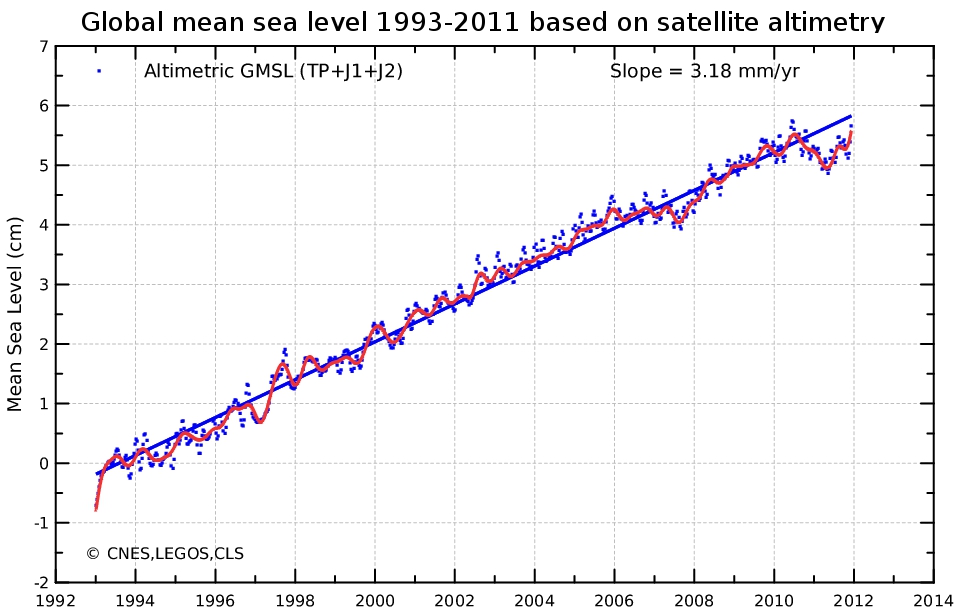
As indicated in a press release from the NASA Jet Propulsion Lab last year, short-term trends in global sea level rise are greatly affected by temporary exchanges of water mass between the land surface and ocean - creating 'potholes' and 'speed bumps' in the sea level record. This a consequence of changes in precipitation (rainfall & snow) resulting from the El Niño-Southern Oscillation (ENSO).
During La Niña the sea surface is cooler-than-normal and rainfall is concentrated over land, which leads to a temporary fall in global sea level. With El Niño the surface of the tropical Pacific Ocean becomes warmer-than-normal, and rainfall gets concentrated over the ocean. This, combined with the drainage of water from land, causes a temporary spike in global sea level.
ENSO is principally responsible for the large year-to-year fluctuations evident in the global sea level record, but neither of these two phenomena (El Niño/La Niña) alter the long-term sea level rise which results from the melting of land-based ice, and the thermal expansion of the oceans as they warm. They do, however, cause sufficient 'noise' to obscure the long-term sea level rise when viewed at short intervals.
In the last two years two back-to-back La Niña have temporarily lowered sea level, but La Niña appears to have weakened in recent months and accordingly we would expect an uptick in sea level rise as conditions move closer to neutral. A quick look at AVISO confirms this, see Figure 1.

Figure 1 - The reference mean sea level since January 1993 (left) is calculated after removing the annual and semi-annual signals. A 2-month filter is applied to the blue points, while a 6-month filter is used on the red curve. By applying the postglacial rebound correction (-0.3 mm/year), the rise in mean sea level has thus been estimated as 3.18 mm/year. Image from AVISO.
Rather than focusing on the potholes, as the skeptics do, one needs to consider the broader picture. That means factoring in the speed bumps too. See figure 2.

Figure 2 - University of Colorado global mean sea level data with a 12-month running average, and short-term declines. This animation does not include the latest sea level updates indicated in figure 1.
What happens to global sea level rise over the short-term will depend on which aspect of ENSO develops in the tropical Pacific this year. Whatever the case may be, global sea level rise will continue over the long-term because of the accelerating melt of land-based ice and continued warming of the oceans.
Posted by Rob Painting on Tuesday, 7 February, 2012
 |
The Skeptical Science website by Skeptical Science is licensed under a Creative Commons Attribution 3.0 Unported License. |